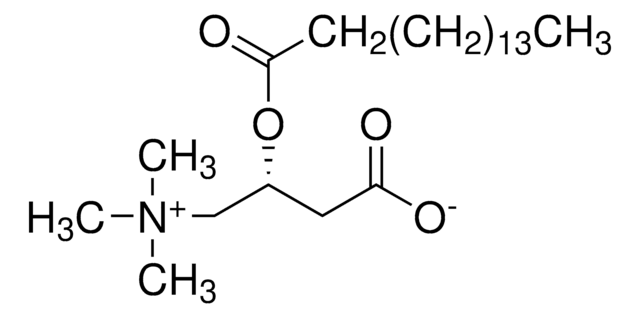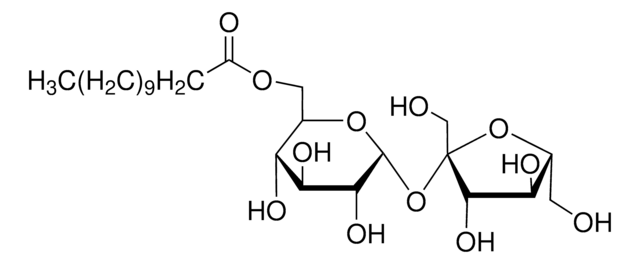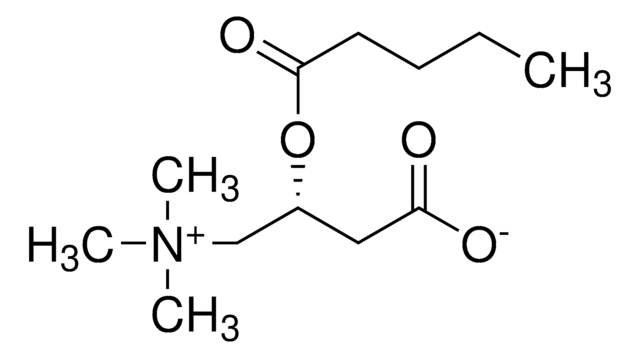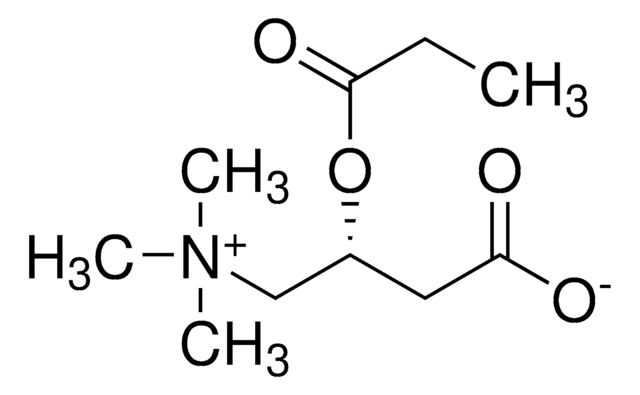39953
Lauroyl-L-carnitine
≥95.0% (HPLC)
Synonym(s):
(-)-Lauroylcarnitine, dodecanoylcarnitine, (2R)-3-Carboxy-N,N,N-trimethyl-2-[(1-oxododecyl)oxy]-1-propanaminium inner salt, L-Carnitine dodecanoyl ester, C12-Carnitine, Dodecanoyl-L-carnitine
About This Item
Recommended Products
Quality Level
Assay
≥95.0% (HPLC)
form
powder or crystals
optical activity
[α]/D -20±2°, c = 1 in methanol
packaging
pkg of 10 mg
pkg of 50 mg
impurities
≤10% water
color
white to off-white
functional group
ester
storage temp.
2-8°C
SMILES string
C[N+](C)(C)C[C@H](OC(CCCCCCCCCCC)=O)CC([O-])=O
InChI
1S/C19H37NO4/c1-5-6-7-8-9-10-11-12-13-14-19(23)24-17(15-18(21)22)16-20(2,3)4/h17H,5-16H2,1-4H3/t17-/m1/s1
InChI key
FUJLYHJROOYKRA-QGZVFWFLSA-N
Looking for similar products? Visit Product Comparison Guide
General description
Application
Biochem/physiol Actions
Features and Benefits
- Can be used in Metabolomics and Biochemical research
- High-quality compound suitable for multiple research applications
Other Notes
Storage Class Code
11 - Combustible Solids
WGK
WGK 3
Flash Point(F)
Not applicable
Flash Point(C)
Not applicable
Certificates of Analysis (COA)
Search for Certificates of Analysis (COA) by entering the products Lot/Batch Number. Lot and Batch Numbers can be found on a product’s label following the words ‘Lot’ or ‘Batch’.
Already Own This Product?
Find documentation for the products that you have recently purchased in the Document Library.
Customers Also Viewed
Our team of scientists has experience in all areas of research including Life Science, Material Science, Chemical Synthesis, Chromatography, Analytical and many others.
Contact Technical Service















